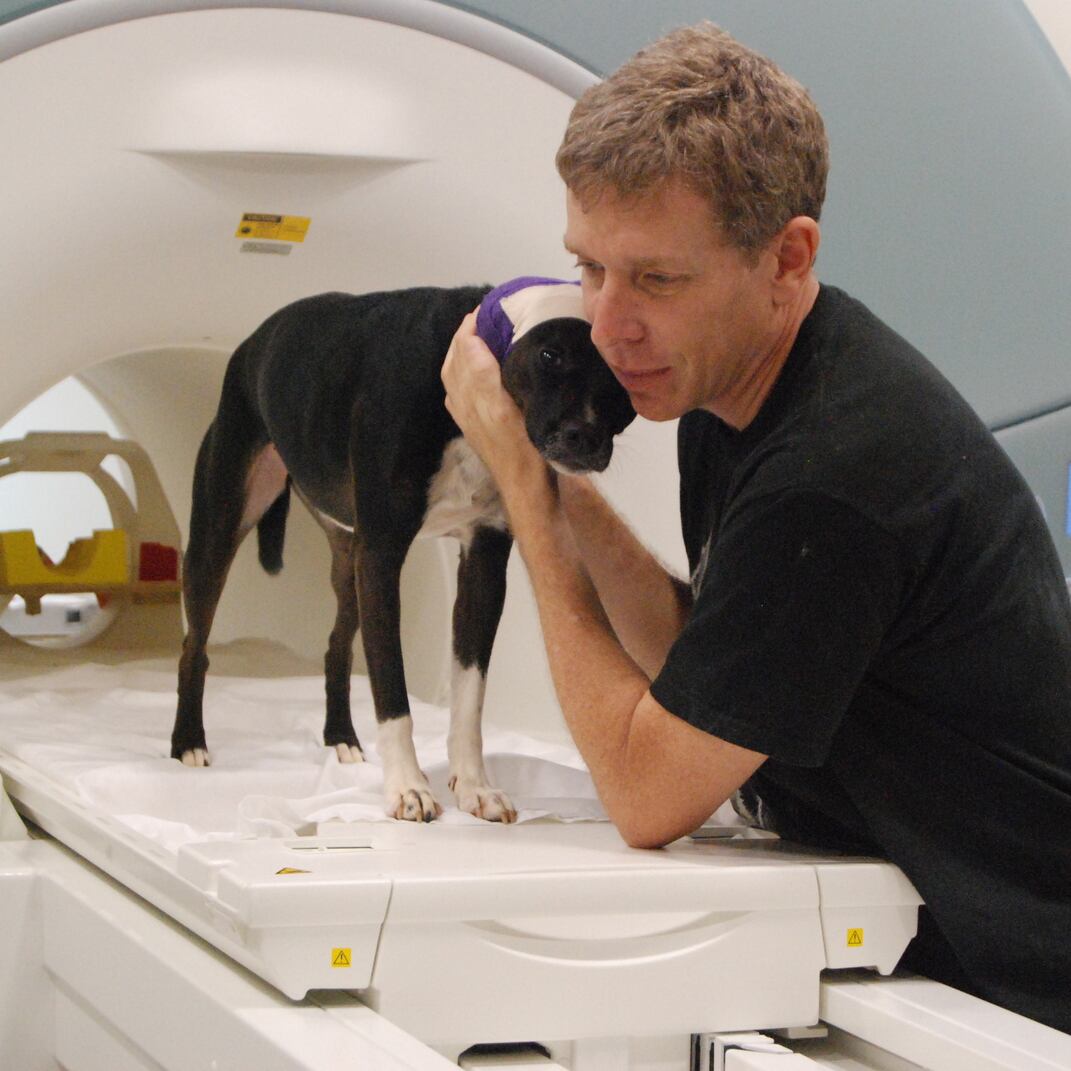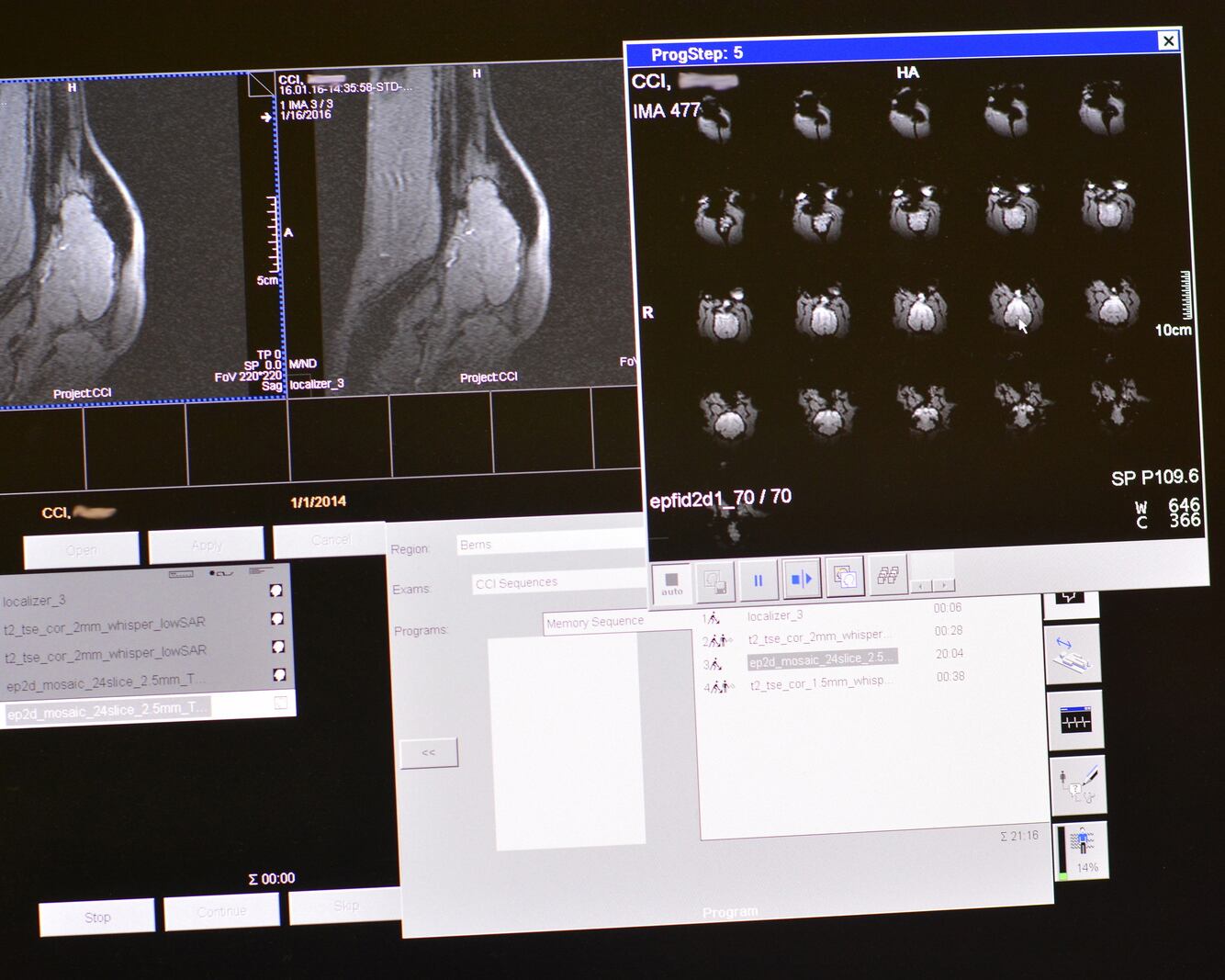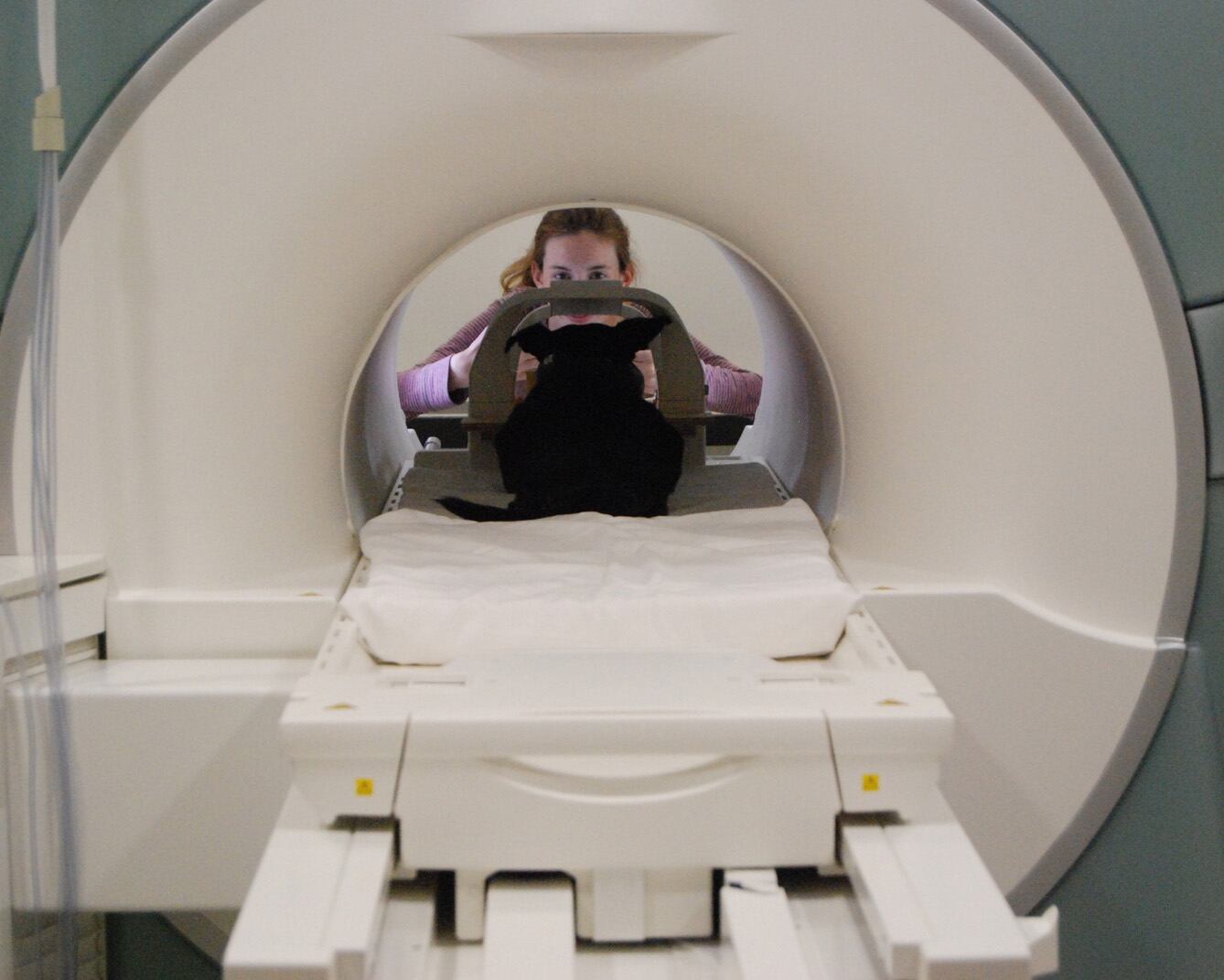Gregory Berns bristles at critics attacking his $1.1 million "Pentagon puppy project" research as wasteful and frivolous.
For starters, none of his dogs are puppies. "All of the dogs we use are older," the Emory University neuroscientist notes. "We can't work with puppies."
More importantly, he believes his work studying canine brain patterns from his base in Atlanta could save millions in training and program costs nationwide, dramatically improving the lives of troops and wounded veterans who rely on the service animals’ specialized skills. [[[CAN WE ADD A SENTENCE HERE STATING 1) WHERE THE WORK IS PERFORMED (ATLANTA?) 2) AND WHAT IT FOCUSES ON? JUST A QUICK OVERVIEW OF WHAT YOU COVER BELOW//A.deG.]]]
Instead, the research has been grouped into the latest Capitol Hill hit list of unchecked federal spending, a frustrating distraction for his efforts, he says.
In January, Senate Armed Services Committee Chairman Sen. John McCain, R-Ariz., released the third draft of his "America's Most Wasted" report, chronicling $27 billion in "wasteful spending" and "pork-barrel projects" among government program budgets.
"I believe we have a vital responsibility to hold lawmakers and the Obama Administration responsible for Washington’s spending addiction," the five-term senator said in a news release accompanying with the report. "If Washington refuses to rein in spending, future generations will bear the burden."
Among the projects listed in McCain's report was were more than $820,000 for a National Science Foundation study on "how children cross the street." The price tag for that topped $820,000. Then there's $25,000 for on "garbage art," funded by the National Endowment for the Arts, and $5,000 for on an Education Department-backed study on Hello Kitty’s popularity.
The report also includes It also included much more controversial targets for finding ideas for savings, like $41 million spent training Syrian rebels to fight the Islamic State group and $150 million to print dollar bills.
In highlighting And McCain’s report also included Berns’ "puppy project," the report pairs its pairing the $1.1 million price tag with a picture of the scientist Berns hugging a dog outside heading into an MRI machine.
"Budget cuts under sequestration have crippled [defense] funding in recent years. Yet despite these dangerous budget constraints, the Pentagon has decided it would be a good idea to use limited defense funding to examine doggy brains," the report states, calling such spending "(The spending) is"not only irresponsible, but also dangerous."
Berns insists his work is focused on saving federal funds, not wasting them. If his And if the work results in leads to better trained bomb-sniffing dogs, it could save troops’ lives.
The military funding — provided through the Defense Advanced Research Projects Agency — is designed to identify markers in canine brain activity to determine which dogs are better suited to act as service companions or perform specialized military tasks.
For troops on the battlefield, that includes dogs detecting explosives, sniffing out drugs and assisting on security patrols. A Belgian Malinois named Cairo was honored at the White House in 2011 for his role in Seal Team 6's raid of Osama Bin Laden's compound in Pakistan.
For veterans, the service dogs include guide dogs for the blind, assistance dogs for wounded warriors who lost limbs, and therapy animals for individuals struggling with post-traumatic stress.

Emory University neuroscientist Gregory Berns calms a dog about to undergo a brain MRI as part of a Defense Department-funded study.
Currently, only about a third of the dogs that go into training programs for that kind of work end up becoming functional service animals. But putting each through the training programs costs upward of $50,000.
"If we can improve that success rate from one in three to even one in two, we're talking about the potential of dramatic savings," Berns said.

MRIs of dogs' brains are integral to Gregory Berns' research. Photo Credit: Gregory Berns
Recent work on the project has included baseline brain scans of 50 golden retrievers and Labradors, all scheduled for service dog training. Researchers are matching key markers in the medical data to the dogs' performance, with the hope of finding patterns.
Berns said the results so far have been promising.
"A lot of what a dog does is hard-wired in the genes," he said. "Bad training can screw a dog up, sure, but you need the right raw materials in the dog to do the task at hand. If it works out, I would hope these biological markers get incorporated into the selection process as early as possible."
Of course, whether it can become that simple is still an open question. And Berns acknowledges that potential savings don't provide immunity from immediate criticism.
"It's a fair question to ask about [the project], because $1 million is a lot of money," he said. "But we're not hiding anything. We're open and transparent about this."

A dog is prepared for an MRI as part of a research project designed to determine if service dogs have biological markers. Photo Credit: DARPA
Broad-based criticism of projects like his, Berns argues, turns valuable research into little more than a punchline.
"It's obviously very frustrating, as a researcher, when politicians take a potshot at your work," he said. "And DARPA constantly gets grief for the things they fund, which honestly I think is unfair, because their mission is to fund advanced ideas and is high-risk."
As for the puppy project label, Berns prefers the efforts' real name: "Functional MRI and behavioral markers of successful service dogs."
He admits it's less catchy, but insists it's more accurate.
Leo Shane III covers Congress, Veterans Affairs and the White House for Military Times. He can be reached at lshane@militarytimes.com.
Leo covers Congress, Veterans Affairs and the White House for Military Times. He has covered Washington, D.C. since 2004, focusing on military personnel and veterans policies. His work has earned numerous honors, including a 2009 Polk award, a 2010 National Headliner Award, the IAVA Leadership in Journalism award and the VFW News Media award.





